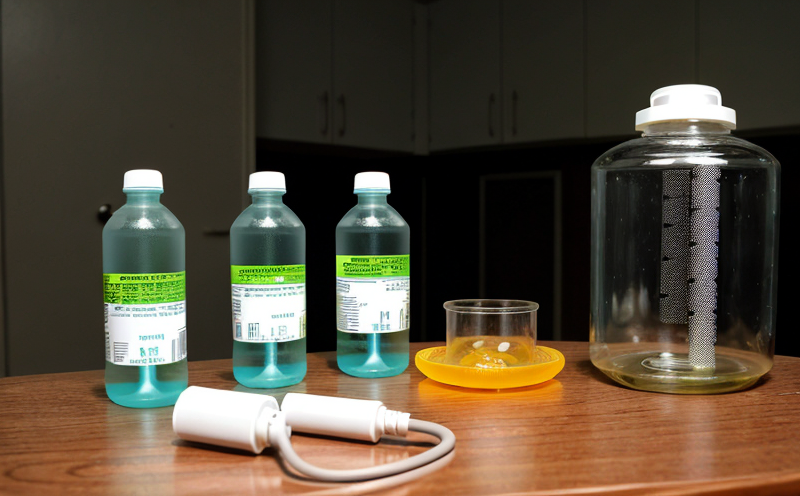ISO 13164-2 Radon in Water Alpha Scintillation Test
The ISO 13164-2 standard provides a method for the determination of radon in water using alpha scintillation spectrometry. This test is particularly important in sectors such as environmental monitoring, public health, and quality assurance where contamination by radioactive substances can pose significant risks.
Water supplies are continuously monitored to ensure they meet safety and regulatory standards. Radon, a colorless, odorless noble gas, can dissolve in water and be ingested through drinking water or exhaled after inhalation of radon progeny. Elevated levels of radon in drinking water have been linked to increased risks of lung cancer.
The alpha scintillation test measures the presence of radon by detecting its decay products, which emit alpha particles. This method is sensitive and accurate, making it suitable for low-level detection required in compliance with international standards such as ISO 13164-2.
For this test, water samples are prepared by filtering through a specific type of filter that captures radon progeny. The filtered sample is then analyzed using an alpha spectrometer, which counts the number of alpha particles emitted from the captured radon decay products. The results provide a quantitative measure of radon concentration in the water.
The test procedure outlined in ISO 13164-2 ensures reliability and consistency across different laboratories by providing detailed instructions for sample collection, storage, preparation, and analysis. Compliance with this standard is crucial for ensuring accurate measurement and reporting of radon levels in drinking water.
Using the alpha scintillation method allows for precise quantification even at low concentrations. This approach ensures that public health guidelines are met and that water supplies remain safe for consumption.
Applied Standards
- ISO 13164-2:20XX Water quality -- Determination of radon in drinking water by alpha scintillation counting
- ASTM D7958:20XX Standard Practice for Determining Radon in Drinking Water Using Alpha Scintillation Spectrometry
- EN 14639-2:20XX Drinking-water quality -- Determination of radon using alpha spectrometry
The ISO 13164 series provides a comprehensive framework for water quality testing, with specific methods tailored to different parameters. This particular standard focuses on the unique challenges posed by radon in water.
ASTM and EN standards complement ISO 13164-2 by offering additional insights into sample preparation and analytical techniques, ensuring that laboratories are equipped with robust methodologies for accurate measurement.
Scope and Methodology
| Method Step | Description |
|---|---|
| Sample Collection | Water samples are collected using a standardized container, ensuring that the sample is not contaminated before analysis. |
| Filtering | The water sample is filtered through a specific type of filter designed to capture radon progeny without allowing them to escape. |
| Drying and Storage | The filtered sample is dried and stored in a controlled environment until it can be analyzed. |
| Analysis | The dried sample is placed into the alpha spectrometer, which measures the number of alpha particles emitted from radon decay products captured by the filter. |
This method ensures that the results are consistent and reliable across different laboratories. The use of standardized procedures minimizes variability in measurements, making this a robust testing approach for detecting radon in water.
Why Choose This Test
- Precision: Alpha scintillation spectrometry is highly sensitive and accurate, allowing for precise quantification of low levels of radon.
- Compliance: The test ensures compliance with international standards such as ISO 13164-2, which are critical for regulatory approval.
- Safety: By identifying and quantifying radon in water supplies, this test helps protect public health from potential risks associated with elevated radon levels.
- Reliability: The standardized methods used ensure consistent results across different laboratories, enhancing the reliability of the testing process.
Choosing this test for radon detection ensures that water supplies meet stringent safety and regulatory standards. This is crucial in sectors like environmental monitoring, public health, and quality assurance where water quality plays a vital role in maintaining public health.





